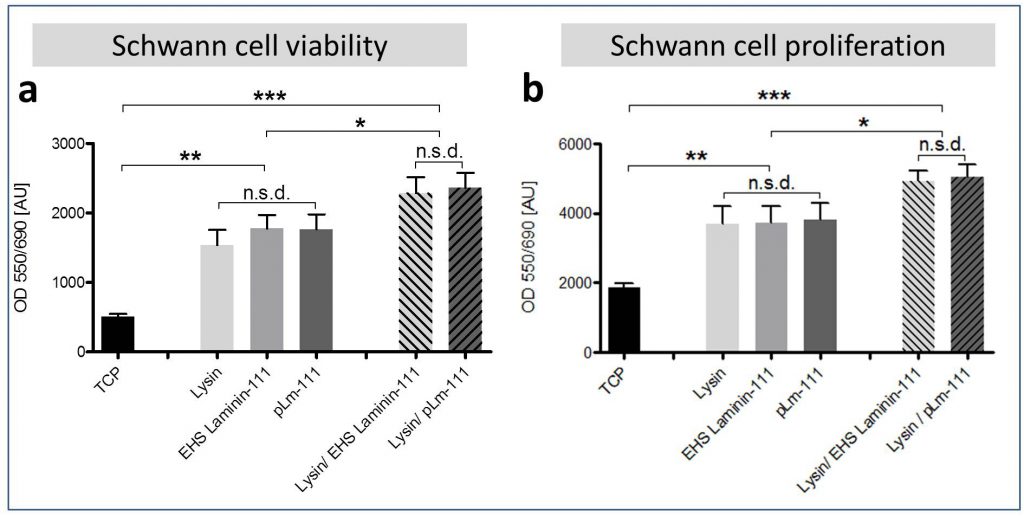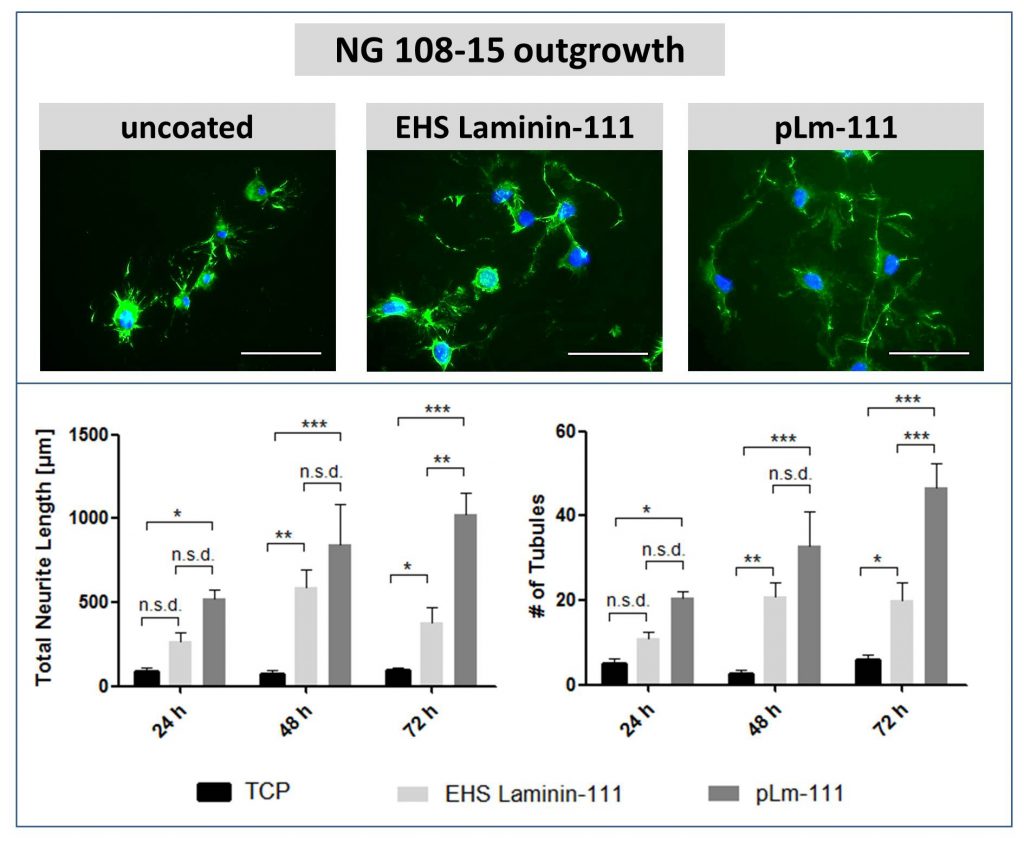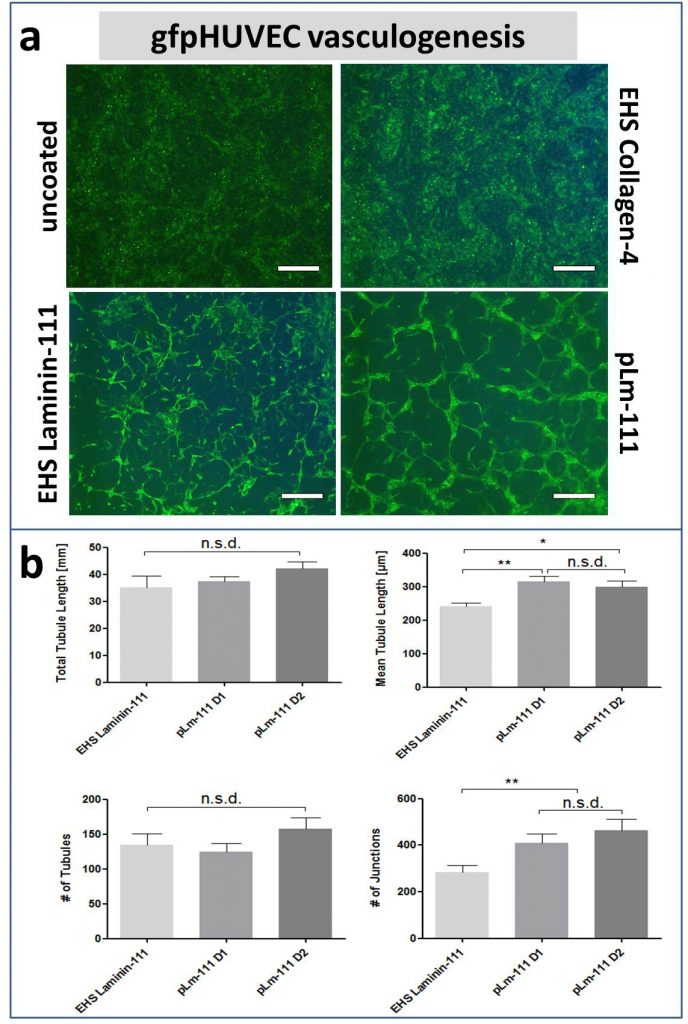Laminin-111, a 800 kDa protein, plays a fundamental role during embryogenesis in mammals, including cell adhesion, migration, proliferation and differentiation. Hence, laminin-111 is a frequently used biomaterial in research, however isolated in most cases from animal tumors or with cost-intensive recombinant techniques.
Recently, the Ludwig Boltzmann Institute for Experimental and Clinical Traumatology has established an effective method for isolating laminin-111 from human placenta, a medical waste material mainly composed of fetal elements. By using a few smart and non-toxic isolation steps, native laminin-111 (pLm-111) could be isolated within only four processing days.
In vitro, pLm-111 promotes effective adhesion of primary Schwann cells (Figure 1), outgrowth of NG-108-15 neural cell lines (Figure 2), and spontaneous formation of interconnected vascular networks of HUVEC cells (Figure 3).
In summary, the availability of pLm-111 offers new, fully-human research approaches for Tissue Engineering and Regenerative Medicine and may provide a new platform technology for clinical use with an increased overall safety profile for patients.


